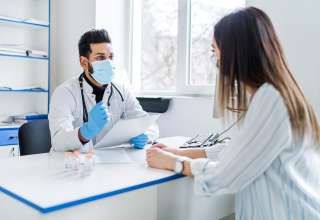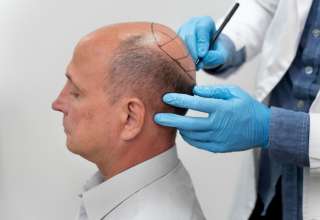Have you ever heard a bone creek in your body? The chances are yes if you are 50+. Well, this is osteoporosis — a condition caused by low bone density resulting in brittle and fragile bones. Literally, osteoporosis leads to an abnormally porous, compressible bone, like a sponge. This skeleton disorder weakens the bone and leads to frequent bone fractures (breaks). By definition, osteopenia is a bone condition that is slightly less dense than normal bone but not to the osteoporosis degree of bone.
Normal bone consists of protein, collagen, and calcium, all of which give strength to the bone. Osteoporosis-affected bones may break (fracture) with a relatively minor injury that would not normally cause a bone to fracture. The fracture can be either cracked (as in a hip fracture) or collapsed (as in a spine vertebrae compression fracture). Spine, hips, ribs, and wrists are common areas of osteoporosis bone fractures, although fractures associated with osteoporosis may occur in nearly any skeletal bone.
What are the possible causes of osteoporosis?
Simply put, when your body absorbs more bone than it produces, osteoporosis happens. In other words, your bones are losing density, weakening, and prone to fractures. This process is not the only cause of osteoporosis; other factors contribute to the onset of the disease and exacerbate it.
Diet
Your diet has a major impact on your bones ‘ health. Some foods and nutrients, while others do not, promote healthy bone growth.
Nutrients essential to healthy bones
Calcium:
For bone growth and maintenance, this mineral is necessary.
Vitamin D:
Vitamin D helps to absorb calcium in your body. You can read more about calcium and vitamin D’s importance.
Other vitamins and minerals that support bone health are magnesium, phosphorous, vitamin K, vitamin B, and vitamin B12. You’ll probably get enough of these nutrients from the food you’re eating, but if you’re not eating a balanced diet, you should take a multivitamin or supplement.
Prevention of osteoporosis
Your genes are responsible for determining your skeleton’s height and strength, but factors such as diet and exercise affect how healthy your bones are.
Exercising regularly
It is essential to exercise regularly. Adults aged 19 to 64 should do the aerobic activity of moderate intensity, such as cycling or fast walking, every week for at least 150 minutes (2 hours and 30 minutes).
For improving bone density and helping to prevent osteoporosis, weight-bearing exercise and resistance exercise are particularly important.
In addition to aerobic exercise, adults aged 19 to 64 should also undertake muscle-strengthening activities on 2 or more days a week by working for all major muscle groups, including legs, hips, back, abdomen, chest, arms, and shoulders.
If you have been diagnosed with osteoporosis, it’s a good idea to talk to your GP or health care professional before starting a new exercise program to make sure it’s right for you.
Exercises that carry weight
Weight-bearing exercises are exercises that support your weight with your feet and legs. High-impact weight-bearing exercises like running, skipping, dancing, aerobics, and even jumping up and down on the spot are all useful ways to strengthen your muscles, ligaments, and joints.
Wear footwear when exercising that provides adequate support for your ankles and feet, such as trainers or walking boots.
People over the age of 60 may also benefit from regular exercise in weight-bearing. This can include walking briskly, hold-fit classes, or a tennis game. However, swimming and cycling are not exercises that carry weight.
Exercises with resistance
Resistance exercises use muscle strength where bone strength is boosted by the action of tendons pulling on the bones. Examples are press-ups, weightlifting or the use of gym weight equipment.
If you’ve joined a gym recently or haven’t been there for a while, your gym is likely to give you an induction. This involves showing how to use the equipment and having recommended exercise techniques.
When you’re not sure how to use a piece of gym equipment or how to do a particular exercise, always ask an instructor for help.
Healthy food and supplements with vitamin D
It is recommended that everyone eat a healthy, balanced diet. It can help prevent many serious health conditions as well as osteoporosis, including heart disease, diabetes and many forms of cancer.
For the maintenance of strong bones, calcium is important. Adults need 700 mg a day from your daily diet, which you should be able to get.
What else prevents osteoporosis from occurring?
Don’t drink excessive alcohol. Having more than two drinks a day is associated with higher bone loss chances.
Stop smoking. By keeping the hormone estrogen in your body from working well, it doubles the chance of bone loss and fractures.
Avoid the “female athlete triad.” Women who intensely exercise and train may have three problems thin bones, lack of a menstrual cycle, and eating disorders. It often happens to young women who, although they work a lot, stick to very restrictive diets. Athletes with problems with their periods have lower levels of estrogen. This often results in a lower mass of the bone. Drink less soda. Some findings show that colas are more likely to result in bone loss than other carbonated soft drinks. The extra phosphorus in them may prevent your body from absorbing calcium. Or it may be that women substitute soda for calcium-rich drinks, such as milk.
Orthopedic surgeons
Before fragility fractures occur in osteoporosis patients, even the most qualified orthopedic surgeon fails to recognize the importance of their roles in patient education. Not only do we need to lead the effort in fast and effective treatment because it has a direct impact on clinical practice, but we also need to participate proactively in efforts to prevent fragility fractures.
Patient education is key to preventing the downward spiral of a patient following a fragility fracture that can lead to immobilization, changes in metabolism, development or exacerbation of underlying medical conditions, life-threatening diseases, and death. The failure to engage in osteoporosis care after we assume the role of treating doctor for the fracture is relevant, especially when these patients have twice the risk of another fracture compared to patients without fragility fractures.
Usually, an orthopedic surgeon perceives his/her role as the management of fractures. There is little or no effort to discuss osteoporosis management either before a fragility fracture is completed or after treatment for the fracture. This contributes to receiving proper treatment from only one of five patients with osteoporosis. If we are to “own the bone,” we need to better recognize patients as a professional society who are at risk for fractures of osteoporosis and fragility.
Many leaders in orthopedics have heard this call for action without successful adoption in most clinical practices because of barriers resisting change. Numerous randomized controlled studies have shown that an orthopedic surgeon is trained in effective detection and treatment of osteoporosis. However, these studies ‘ temporal relationships over the past decade suggest that local intervention has been successful, but the success has not translated into broad responsibility acceptance.
Published studies have shown that the treatment of osteoporosis typically involves no more than one of five orthopedic surgeons. This is disappointing when we are called upon to treat fragile patients the front line of the osteoporosis sentinel event.
In residency, the understanding of the role of the orthopedic surgeon in osteoporosis management begins. The focus in many residency programs is on the basic science of osteoporosis and fracture treatment, but not on implementing a comprehensive osteoporosis management program, including fragility fractures. As numerous studies have shown, if an orthopedic surgeon education program is set up, the percentage of patients appropriated more than doubles to treat osteoporosis. If therapy plans are included as part of orthopedic training programs with strong leadership and mentorship used in the implementation, then this practice is likely to continue the careers of an orthopedic surgeon.










